Fan Art Tuesday: @oranjelly
Check out this wonderful illustration of Vi in the Seraph by Juji — who you can find on Twitter @oranjelly.
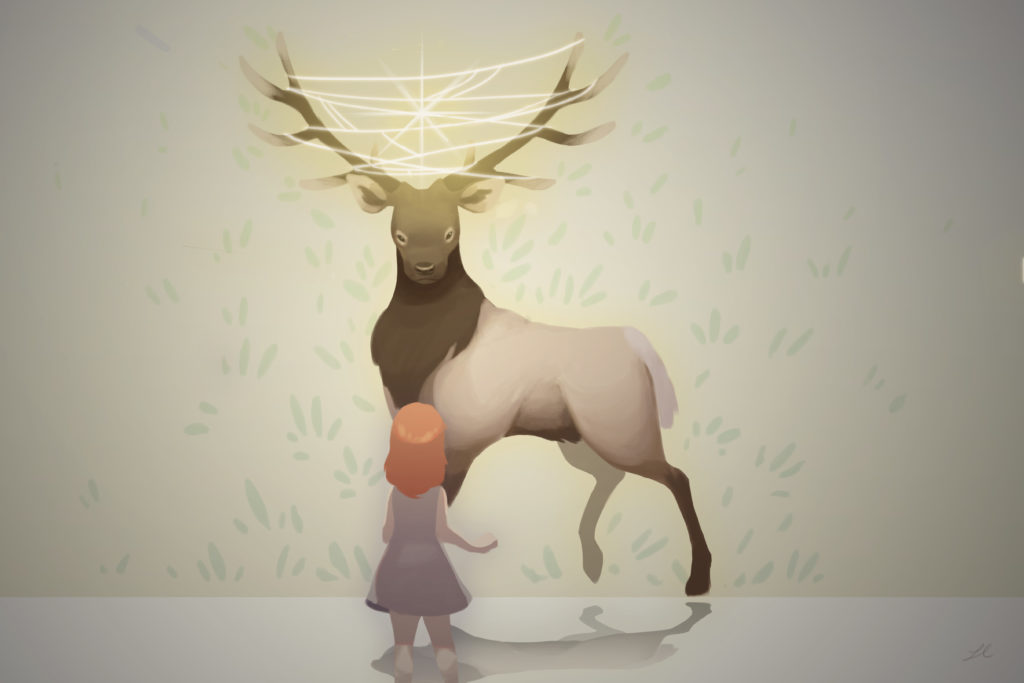
Check out this wonderful illustration of Vi in the Seraph by Juji — who you can find on Twitter @oranjelly.

New Monthly Q and A over at Facebook.
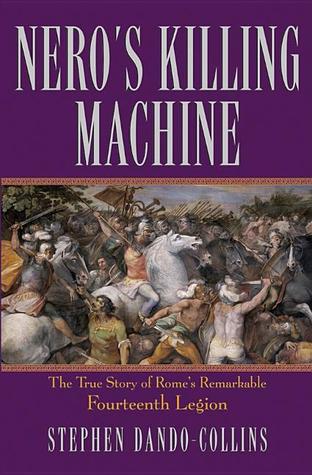 I’m not sure if I should add a point or take it away for the fact that this had to be a difficult book to write. A history of a single Roman military legion is simply faced with an enormous problem: How do you make the story of what are actually many armies over hundreds of years into a unified story of an army, as if it were one living breathing beast? As one of the last chapters admits, the men of the early 14th legion would have sneered at the bearded, married, business-owning, involved-in-local-politics later legion that dared to share the same name as their beloved legion that ferociously banned all those things. This central difficulty is made worse by a peculiarity of how Rome recruited and fielded its legions: men signed up for 16- or later 20-year stints, after which they retired. Granted, some men would stay in, and be moved to the upper ranks, but the vast majority of each legion simply left. An entire new army was formed of green recruits every 20-ish years. (And you did NOT want to go into battle with that baby army for a while!) So how is this army with massive periodic turnover to be treated as the same army in one story over centuries? How do you successfully tell that story?
I’m not sure if I should add a point or take it away for the fact that this had to be a difficult book to write. A history of a single Roman military legion is simply faced with an enormous problem: How do you make the story of what are actually many armies over hundreds of years into a unified story of an army, as if it were one living breathing beast? As one of the last chapters admits, the men of the early 14th legion would have sneered at the bearded, married, business-owning, involved-in-local-politics later legion that dared to share the same name as their beloved legion that ferociously banned all those things. This central difficulty is made worse by a peculiarity of how Rome recruited and fielded its legions: men signed up for 16- or later 20-year stints, after which they retired. Granted, some men would stay in, and be moved to the upper ranks, but the vast majority of each legion simply left. An entire new army was formed of green recruits every 20-ish years. (And you did NOT want to go into battle with that baby army for a while!) So how is this army with massive periodic turnover to be treated as the same army in one story over centuries? How do you successfully tell that story?
You don’t. At least, I don’t think that Stephen Dando-Collins quite makes the case on which this book rests: If you’re telling the tale of The Martial and Victorius Twinned 14th Legion, you’re saying there IS a tale of the fourteenth–and there isn’t. There are only tales, plural, of the 14th during certain years. It’s like talking about the Boston Red Sox. You can tell of the Cy Young years and compare them to the Roger Clemens years. At best, maybe you could structure a tale around the 86 years without a World Series win. (But really, to have the metaphor be more accurate, you’d have to have the Red Sox move from Boston every couple years to a new home city, and change coaches/generals more frequently. On the plus side, the level of looting could stay about the same.
Nonetheless, this is a reasonably entertaining and informative book of pop-history. I learned things. In fact, I learned some things that were directly in conflict with other things I’ve learned, at least one of them recently. I’d recently relayed to a friend the factoid that Roman legionaries were required to be 6′ tall–which I found remarkable! That’d be like recruiting only guys who are 6’5″ or something today, which would be pretty darn difficult, but on the other hand, I could see that recruitment strategy making a lot of sense when you’re looking to go murder people by the strength of your muscles alone. So yeah, sure, you want the tallest, strongest guys from every college sports team to go do your murder and looting work. And then one could see why armies made up of such men, also trained into believing they can kick anyone’s butt, and instilled with immense discipline would, in fact, be able to kick anyone’s butt–except this book says it’s not true at all. Crap. Sorry friend I told this factoid to. Instead, Mr. Dando-Collins says the average legionary was 5’4″, which is believable, and actually sort of remarkable in its own way. Imagine a bunch of guys 5’4″ kicking your butt and taking all your worldly goods. Plus your self-respect. Surely the Germans who averaged 5’8″ thought so.
In reading about the ancient world, I was again impressed by how fully a Judeo-Christian ethic seems to have suffused our present Western understanding of morality during warfare. War in the ancient world was incredibly brutal, and unapologetically so. Not just the fighting, but how people were treated in the aftermath, and what excuses (none) were deemed necessary to go to war in the first place. Certainly, instead of spreading the light of civilization or securing the borders so the Empire could be safe, one gets a palpable sense over and over that the men of the Roman legions just wanted to go kill people and take their stuff. (This, despite the fact that going and doing that would certainly cost a lot of them their lives.) Somehow in my mind, I’d separated the Roman soldiers from, say, Vikings. Vikings and other raiders are just thieves, murderers, and rapists, right? (Who happen to bring some good stuff along with them.) But Rome? Rome is law and order. Pax Romana, baby!
Well, that law is Roman law. Roman law provides no protection for anyone who is NOT a Roman citizen. So in the famous case of Boudica, where her dying husband Prasutagus (some say dad) tries to leave her half of his estate (the other half going to Nero, hoping that buys his good will), the law is very different from what we would think. Roman law doesn’t let women inherit, and anyone who dies without an heir leaves everything to Caesar. So to Nero, the guy tried to buy him off by… giving Nero only half of what belonged to Nero by law. It didn’t buy Nero’s good will at all–and, you know, Nero is Nero. So Nero’s little bailiffs go to evict Boudica who is “squatting” in Nero’s house with her daughters. (i.e. She hasn’t left her own house.)
She defies the bailiffs, and they beat the hell out of her and rape her daughters–and this is legal, or at least not illegal. A non-citizen has no legal protection, period. (It happens to be very unwise, but there’s no record that the bailiffs are disciplined for what will start a war.)
Boudica stokes the fires of Celtic fury at what’s been done to her–and everyone already hates the Romans anyway. (Go figure.) So they rise up, and take some towns. Now these are cities and clans aligned with Rome–which is exactly what Boudica’s clan had been, up until that month! And when Boudica’s army takes these cities, does she have mercy on the people there? Not even close.
The Roman writers, not shy about the realities of warfare, called it ‘an orgy of violence’. We’re talking non-combatants and children tortured to death literally for fun. Maybe you can try to dismiss that as propaganda, but it seems the Romans believed it was literally true. There may have been some religious significance to burning people to death and the like… but what? That makes it okay, then? Even if any of this was exaggerated, the death toll was like 70,000 in a couple weeks. Mostly civilians.
That London has a statue of a woman who murdered everyone in it who didn’t flee–meaning old people, young people, the stubborn, and those in denial that a fellow Breton would murder them–is deeply bizarre, that is, until you learn that Elizabeth I identified her as a brave figure fighting off a foreign invasion (just like herself), and later, Queen Victoria set her up as some kind of national hero (also just like herself).
Hmm, politicians abusing history to advance their own ends, how weird is that?
I guess all of us are suckers for an underdog story: brave woman stands up to defend her country against horrible guys! As far as I can tell (and I’m no expert, certainly), the real story is something like this: One, horrible men treat a woman and her family horribly. Two, horrible woman goes on to command the murder, torture, and rape of other tens of thousands of people much like herself. Three, horrible men’s army comes back, fight bravely and well, and then horribly murders the horrible murderers.
History’s awesome, isn’t it? Except where it really, really sucks.
I’m reminded of how earlier times should really be viewed as more alien than I sometimes do. People are people, sure, but culture is more powerful than we think. The Geneva Conventions seem obvious to us. They’re actually not obvious–they’re a triumph of civilization, of imposing morality on the most barbarous of human activities. (They’re often violated, sure, but they’re often upheld, too! And sometimes is a whole lot better than never.)
Excellently performed, although there was a slight technical irritant of the mic picking up the sound of Mr. Fass’s breaths, which became somewhat hypnotic: “Wow, that was a really long sentence to manage on that quick of a breath.” But this is surely a first-world audio problem–I mean, c’mon “the mic is too sensitive”? I can’t really take points off for that, can I?
3.5 out of 5.
The Black Prism is the Kindle Daily Deal today (March 1). Go HERE to pick up your copy for just $2.99!
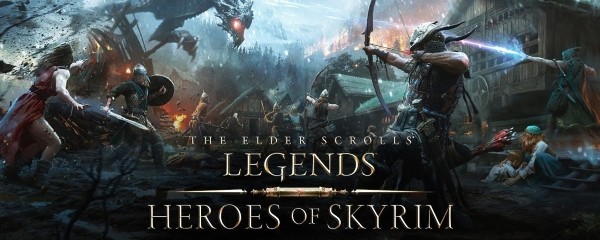
This is a virtual trading card game, of which the most famous is Magic the Gathering. This one is considerably simpler, and thus easier to learn and cheaper to continue to play. This is a game with In-App Purchases done acceptably. Look, I sorta hate IAP too, but it’s here to stay. In many ways, it’s the only way to make sure that a company continues to support and innovate in a game. Otherwise, a year or so after launch, a company sees declining profits or no profits at all and pulls the plug on a game, or at least pulls all the most talented staff from it. They do have keep paying people to keep many of these games going. (Yeah, you can point out maybe a handful or a dozen counter-examples, but CD Project Red/Witcher 3 is an outlier, not a business model.) So, my judgment of any game with IAP comes down to “How Greedy Are These People?” Legends of Skyrim has good single player campaigns that you pay for. You get lots of cards, lots of scenarios. You get to try all sorts of things, which to me is more fun than trying just one thing where you can win all the time. It MOSTLY avoids Pay-to-Win in its online multiplayer component. I really enjoy it. If I only have 15 minutes to play a game in a day (a sadly common occurrence), I’ll play this one.
Another great fan art piece by Noon30ish featuring characters inspired by the Lightbringer universe.
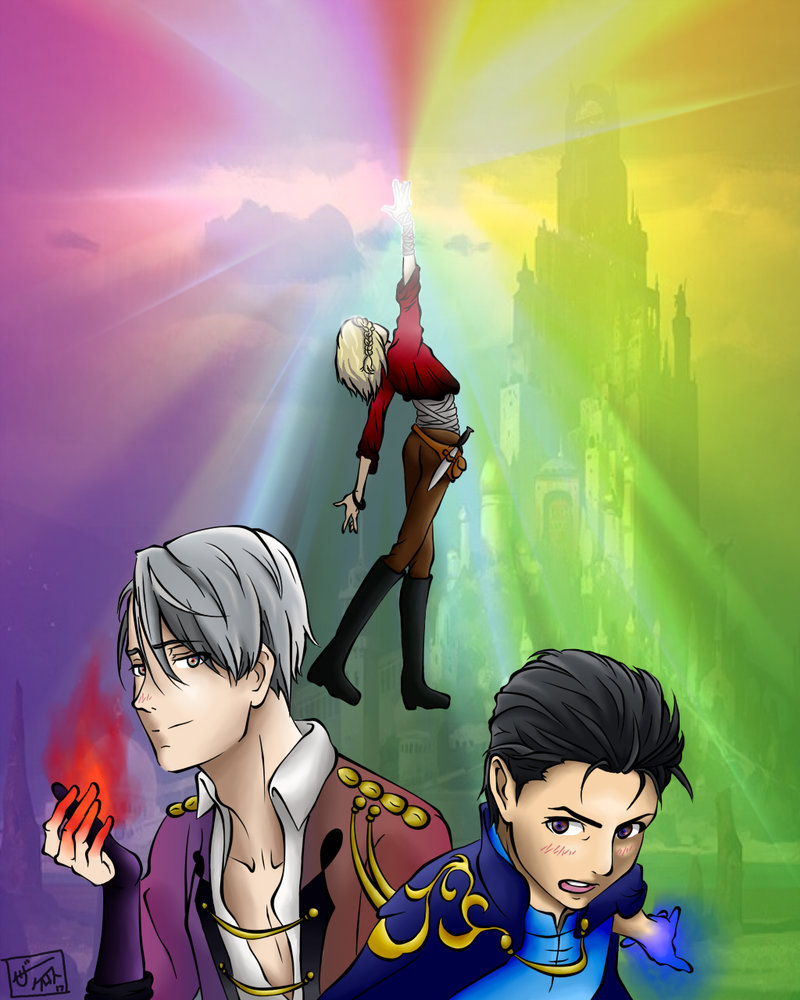
See more by the artist here.

Destiny 2 is a hard game to talk about rationally. Take a bunch of incredibly talented programmers and artists and shackle them to greedy executives determined to serve up the most mediocre (read, cheap) product possible to keep outrage only simmering but not boiling over, and marketing folks wielding an enormous budget with great skill to placate gamers that REALLY SOON all their gripes will be fixed, and give one fair score to everyone.
The old problem with game companies was that they were run by programmers who had no idea how to run the huge companies they were suddenly in charge of. Deadline? What’s that? The ludicrous over-time hours, the terrific lack of ability to forecast when a project would be finished… there were real problems.
Their vast piles of money, and the vast piles of money they were leaving on the table through mismanagement, threw the pendulum all the way to this side of things. You can see the fingerprints of this on otherwise incomprehensible decisions: Destiny 1 was a complete mess in terms of story and end-game mechanics. (Eventually, a year or so after I quit, it apparently got really good.) Why would you launch a game that wasn’t ready? Because you’ve got investors. You’ve got guys who only get bonuses if they hit their targets. So you push product out the cloaca and lean on the marketing department to fix it. Destiny 2 was a far more polished as a game, but they took many of the wrong lessons from it.
The developers learned wonderfully from Red Dead Redemption–part of what makes an open world fun is that there’s ALWAYS something to do when you’re on your way to do something else. “I’m just going to go kill these guys for a bit, then I go on to quest x–oh, look, a cave! Oh hey, there’s a tough enemy who drops a loot box if you kill him!” It’s ADD fun to the max.
The game shoots beautifully. The controls are so tight and slick it almost makes it hard to play shooters that are older. The cinematics and art are stunning. Beautiful set pieces. Big moments. Sure, the story is trash. The villain is possibly the least frightening guy to ever blow up a thousand planets. (He stomps around and talks. All game.) The difficulty has no spikes at all. If you don’t beat the final boss on the first try, I’d have to ask what quantity of illicit substances you’d stuffed up an orifice when someone pounded on your door and you thought it was the cops. But heck, difficulty spikes could keep people from the end game–where the In-App Purchases and company profit lives.
And indeed, everything I can see that inspires rage from the (admittedly rage-prone) online gaming community on sites like r/DestinyTheGame makes sense when you think about what costs Bungie/Activision versus what brings in money for Bungie/Activision.
It’s a shoot/loot collecting game… without loot. In Destiny 1, stats were rolled random for every gun. So you could get your 10th copy of Super Rocket Launcher Black, but you’d check that sucker out… because it might have the “god rolls” you were looking for. Destiny 2, all stats are set. Get a cool gun, try it to see if it sounds different than your other gun in the same class. But get another copy of that gun, and it’s exactly the same. Add to this that the rarest gun type, Exotics, had some common bug where if you got an Exotic Gun, say the XXX, you had really great chances that the next five or six or thirteen super rare Exotic Guns you got would be XXX… which all have the same stats. You might play all evening to finish one quest line just to get a exotic at the end… and you get your eighth XXX. And this would happen when there are only 26 Exotic guns to begin with.
They artificially slow progress at certain points in order to make the game feel like it has more content than it does. Even that had bugs, so some people had greatly slowed progress while people they’d play with (at literally the same time) would quickly outrank them. That’s… not fun. They speed progress for infrequent players (gotta keep ’em in the game so they can buy IAP), and slow it for people who are ranking up too fast. So if you figure out an efficient order to do quests, you’ll suddenly see your progress is slowed.
Guns individually feel great, handle great, sound great. Great work team… and that’s manacled to… your damage never goes up. This gun SAYS it’s level 200, and this one says it’s level 300. Put a lowly grunt AI out there against that gun, and what happens? Level 200 gun: three body shots to kill, or one head shot. Level 300 gun: three body shots to kill, or one head shot. In game-play terms, this means you never feel like you’re tougher than you were last week or last month. All the loot you’ve collected (it’s a loot collecting game) has done you no good at all. Now, whyever would they do this? Because if you have enemies who are intrinsically tough, some players will go to those areas and die. Or level up too fast if they get lots of experience for killing tough enemies (which is how games have done it before). Some players will never even SEE those levels that are so very expensive to create. Or players will be sad that tougher players killed all the monsters in an area. Or can kill in one shot what takes them many, many shots. There are ways to fix this, but they involve making multiple areas. That costs money.
It’s a doll collecting game. The only thing that changes is the cosmetics.
The guns are also weirdly homogenized. Instead of there being hundreds of different guns, with dozens of different feels and bizarre combinations, you have like ten. Some have better stats, more scope sway, extra damage drop-off, different skins and shot sounds… but they eliminated outliers. They said they did this so that the PVP (Player versus Player) wouldn’t get lopsided. But… they already tweak your guns when you go into PVP.
And the PVP experience isn’t good. It’s the least fun I’ve had in PVP since I had the lowest ping on Duke Nuk’em. Even when I won handily I was saying, I hate this. When you play with even one other friend, you’ll tear up opponents. Alone? Good luck. You can’t sort by map or game type or exclude certain ones that infuriate you… Didn’t these guys do Halo? Halo 1… Halo 1 had better match-making by far. And bigger teams. (Destiny 2 is only 4vs4. I’m serious). Halo had quicker load times. That was 16 years ago. In video game years, that’s centuries.
But let’s buy the official line (because we’re not cynical at all) and believe that guns are homogenized so no one has kick-ass guns in PVP. Okay, even if you actually couldn’t figure out any way around that–(say, when you joined a PVP match, your ‘unbalanced’ guns would be re-balanced for PVP)–even if that’s true, a huge number of players don’t WANT to play PVP. Especially when it’s crappy like this. And what does Bungie care if I’ve got a gun that’s “too strong” when I play against the AI? It doesn’t hurt anyone else’s fun. Instead, you’ve made EVERYTHING Bud Light.
A loot collecting game should feel like walking into an enormous grocery store in the Pacific Northwest and venturing into the beer aisle: there are so many beers there, it’s daunting. You know some of those beers won’t be at all what you like. You might hate them. But some you will love. And some, some people will hate and others will love, and people will debate the merits of various beers and what should go with them for hours.
Bungie/Activision have warped us to Michigan circa 1995: “Well… we got Bud. Or Bud Light. Or Natural Light. Or Natty Ice–that’ll get ya trashed! Or Coors. Wait! Wait! We got Rainier here too! It’s an embarrassment of riches at the 7/11 tonight, folks!”
Everything here has been done to have to retain and pay the smallest staff possible to do hot-fixes and rebalancing work that is usually just part and parcel of a massive online social game. (It’s certainly no MMORPG.)
A lot of great people, talented people and hard-working and skilled people dedicated to their art worked on this game. They did amazing work. The suits did amazing work, too. It seems they saw their job as giving gamers the lowest possible return on investment since No Man’s Sky. I can only guess that at least one meeting featured a graph of plotting rising levels of gamer outrage to show at what point gamers won’t buy the sequel. Those people make more money than you or I ever will because they’re actually really good at finding that point, and at manipulating gamers into getting excited for the inevitable “more accessible still!” Destiny 3. People raging at Destiny 2 will pre-order Destiny 3 to get that sweet Lazer Tiger Skin pack for the BamBam Shotgun, and 4 Elite Gold Loot Crates.
Sad, huh? Video games are art. Unfortunately, the art in question is the art of commerce.
Now for a different medium than we usually feature. Look at this magnificent sculpted miniature of Durzo Blint:
If you’d like to see more by this remarkable artist, check out this DeviantArt page.
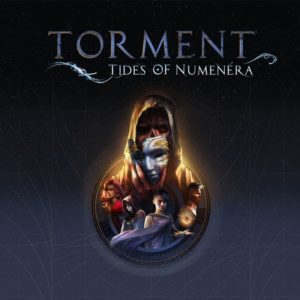 The Definition of Nostalgia.
The Definition of Nostalgia.
I loved 1997’s Planescape: Torment. It remains one of very few games I’ve played through more than once. It was, finally, a video game where it seemed your choices mattered. If you squint hard, you could even see strains of the ideas of Torment show up in the Night Angel trilogy. Big fan. Nuff said.
So I came in to Torment: Tides of Numenera, the spiritual successor to Planescape: Torment with high hopes. The IP is different, sure, so it’s not exactly supposed to be the same thing, but it’s totally supposed to be the same thing.
Trouble is, gaming has changed since 1997. I’ve changed. When my character gets stuck while simply trying to walk around a corner and the movement feels cludgy, in 1997 I just tried again (and again, often); now my tolerance is much lower. “I’m getting stuck on corners? Really?” If you want to evoke an old gaming style, that’s great—but remind us of the good stuff, and quietly fix the b.s. we tolerated because we didn’t know any better, and programmers didn’t either.
The game starts fantastically, making you make tense choices that seem like they’ll have a permanent and an immediate impact—pun intended, if you’ve played. But then they neutered that by giving you the ol’ standard Hall o’ Creation: “Didn’t like any of the choices you made ten minutes ago? They didn’t actually matter, you can undo all that and choose your character type here.”
Oh, very daring. No actually, how incredibly safe. I mean, if a player was just being an idiot and choosing things they really didn’t mean, what’s the worst punishment they would receive if you stuck them with the character they’d chosen to play? Well, they’d have to start a new game, and lose ten minutes of their life—and play the character the way they actually wanted to play the character. That’s not actually bad. You would have shown–in a very few minutes–that the choices matter.
But because they neuter your choice and stick you in front of the long descriptions of how each character type works and what its flavors are—which are totally NOT Fighter, Thief, and Mage. (But totally are.)
So then I’m stuck in the same old familiar What Kind of Fun Do I Want To Have loop that’s sadly so standard in RPGs. I love playing stealthy characters, but it’s really hard to make a game where stealth is a viable and fun path: ergo “Nope, there’s two guys facing each other at that fire. You can totally backstab one of them, but the other one will kill you or chase you forever.” It is precious few games that manage a balance of making you weak (but a badass when you’re in your element so that YOU are what’s scary in the shadows), that expose you to real danger if you mess up, but also allow you to get back into the shadows if things go wrong but you think fast. Think Splinter Cell: Chaos Theory (since we’re going very old school here) or the multiplayer in Splinter Cell: Double Agent.
Here you can choose to be a charming character—which means you’re hoping the designers and writers worked together nicely to give you many situations where the dialogue is more interesting for the charmer and often tilts the direction of an encounter. But of course, you’re always trusting the game designers in some way, right? I mean, usually the Fighter is the most boring of the character types because he or she has the fewest options, but you hope that the designers at least make you feel like a boring badass who destroys people in interesting ways and has visually cool effects that no other character gets.
Well, this is Torment. The writing has to be good, right? And they make a big deal out of how you don’t even have to fight if you don’t want to, so charming is clearly a good option.
But being stuck in this (totally unnecessary) creation screen reading all the character categories and their sub-categories (which feels necessary because they tell you that these are definitely NOT Fighter, Thief, and Mage) definitely makes me think about the creators of the game, rather than being immersed in the game—which I’d been so immersed in as I fell from the sky.
Another fantastic trick they pull that I loved: they make you make a big choice right away between two characters accompanying you. You don’t have enough information to decide between them, but you have to decide anyway. It’s actually the same trick as before (make a huge choice with limited understanding of the fallout—pun intended again, sorry—and let you wallow in the agony of wondering what you’ve missed out on). This time they don’t walk it back, though.
Which is weird, if you think about it. They’ve JUST taught you that you can walk back significant character decisions. So I’m expecting that by the time I get to the first little town, if I decide Doofus 1 isn’t my bro, I’ll find Doofus 2, who’ll say, “Are you tired of that guy?” And I’ll say, “Yeah.”
But they don’t.
In isolation, I really really like the trick. It makes your choice feel like it matters. Sorry, you don’t get to see everything in this game, they’re saying. But what you see will be different than what others see. It’s that big.
In conjunction with the previous big decision that you can walk back, it’s bad design because it’s confusing. Is this a game that gives you choices that you get one shot on (which makes them feel momentous), or is it a game that gives you second chances if you clicked the wrong place (which makes it feel more forgiving)? The first two huge choices offer the opposite answers. That makes this 40 Year Old Gamer distrust the game designers.
I love the art. It’s just fantastic.
I love the quirky characters.
I love the weirdness.
I’m guessing “Overwhelm the Player with the Bigness” was a guiding principle here, because very shortly after you begin, you’re dumped into a city. This does indeed make the world feel big and weird, and I would like it more if the entire stat and inventory systems didn’t already feel weird and complicated. Like, this “Oddity” is a book with an intriguing title. Seems like it could come in handy later… but it’s an oddity. Does that mean I can always sell those, and it won’t screw up the plot, or not?
There’s a reason most games have you enter a small town first before you get to the big city.
Pretty quickly, I come upon a major irritation: I can’t find a place to sleep. No, seriously, my character can survive a fall from 40,000 feet, but he can’t sleep in a fucking field or a ditch. I’d already exhausted my main stat pool (you spend it to try harder tasks, and refresh it by sleeping), so I wander the town, failing easy stat checks and reloading to try them again—“Come on 50% chance!” all in order to find a place to sleep. I find a place, and it’s too expensive. What? The three characters I’ve just had join me are totally impoverished, too? Screw those guys. Where have they been sleeping?
I’m a godling who can’t find a place to sleep. For two hours.
I’m not sure why loading between areas is so slow. There’s nothing 3D here. Most of the background is painted, and static. Shouldn’t this be snappy, even on a console?
Once I finish a quest to earn a place to sleep—yes, seriously, but I still have to pay for it! This is a HUGE city… with one hotel. Choices galore, here, folks!
Then I find out I’ll be punished if I sleep too often. Plot lines advance every time you sleep, and the first ones they show you are bad–a serial killer murders another victim each time you sleep. (So it’s not just that the world advances, it’s that they’re trying to teach you not to sleep and refresh those stat pools.) Now, I can dick around awake as long as I want, and I have to, because I’m revisiting areas to see if I screwed up a dialogue option. I can even die and come back, but as soon as I sleep, that plot line advances. Now, obviously, this is meant to put some stress on the player to hurry up and find that murderer. But it’s obviously meant to punish you for using your stat pools too much. That feels capricious. You have these great abilities, but they don’t want you to use them.
Designers, not every choice should be agony. It’s okay for the charming character to put some effort into charming.
But for me, it IS agony, because the last time I used my stat pools, I got stuck for two hours of real time in an artificial and weird way.
The effort system that works so well in the Numenera table-top gaming system that this is based on doesn’t survive the transition well. Like, I used enough effort that I had an 80% chance to beat that fighter guy, and I failed. You really think I’m not going to reload my save? Did we not grow up playing games at the same time? Fine, THIS time, I’ll use more effort, and definitely beat him—but now I can’t sleep or you’ll punish me? Do I need to go back to the 80% try and reload the save over and over again until I succeed?
Oh, reloading my save takes three minutes? Fun.
No. That’s not my definition of ‘fun’.
I end up feeling the hand of the game designer everywhere, but it doesn’t feel highly polished. Maybe this is a fault in the expectation—Planescape: Torment was a AAA title. This is not. That’s fine. Yes, it’s only $40 (rather than the normal $60 here in the US). But… they’re the ones who billed it as a successor to a AAA game. I expect a AAA level of polish. Or at least AA. I expect snappy loading when the CPU is dealing with isometric screens. I expect that they did play testing.
Yes, it is its own kind of a game—sometimes more a visual novel than a game, with huge long blocks of text. (Much longer than I remember in the original, which also had long blocks.) But if you’re going to have those blocks of text, and you’re going to release your game for consoles, make sure your font works well for consoles. Playing from my couch, (but on a big HD screen) everything would be fine… until I got to some wall o’ text and go ‘What? Did I suddenly get old?’ I think there’s a big font choice somewhere, but I’ve literally never had illegible fonts until this game. Playtesting. Do it.
There’s combat immediately, then no combat for hours. (Even if I hadn’t gotten stuck looking for a place to sleep.) This is not subverting expectations, it’s frustrating them: I’ve been slowly rewarded with a huge collection of weapons choices for all my characters, but there’s been no combat. If I need to pick between weapons, you have to give me a chance to use them.
I wanted to love this game so much. I came in to the experience with a great deal of good will, and a willingness to forgive flaws. (Some of the saltiness above only comes after I look back and examine the bad choices they made along the way.)
Eventually, picking up Torment: Tides of Numenera started feeling like a chore. I thought, “I need to give this another couple hours to turn things around. I need to love this.” But I didn’t love it. I realized I was playing it for nostalgia, not enjoyment. Torment didn’t live up to its name: it wasn’t torment to play, but it also was not a worthy successor to Planescape: Torment.
We think of nostalgia as a longing for an old time or good memories. Literally is comes from Greek roots for ‘returning home’ and ‘pain’. I came in to this game looking for the former, and I found the latter. Bad memories and disappointment now live alongside my old good memories and fondness. The magic is gone. Did. Not. Finish.
Check out this cover for the next Lightbringer book in Germany:
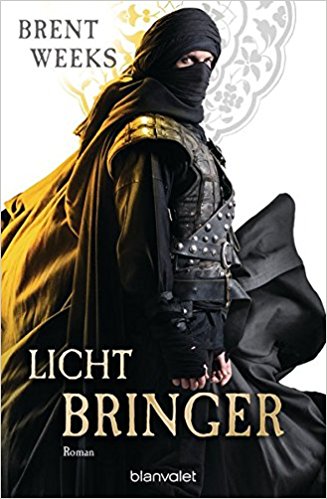
If you read German, you can pre-order here. (Though the release date on Amazon.de is just a placeholder!)